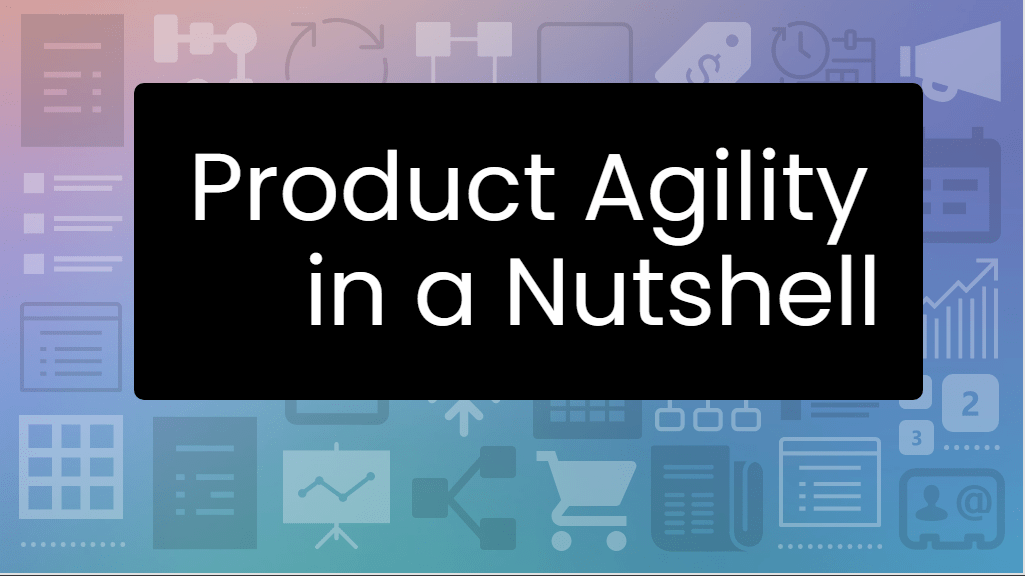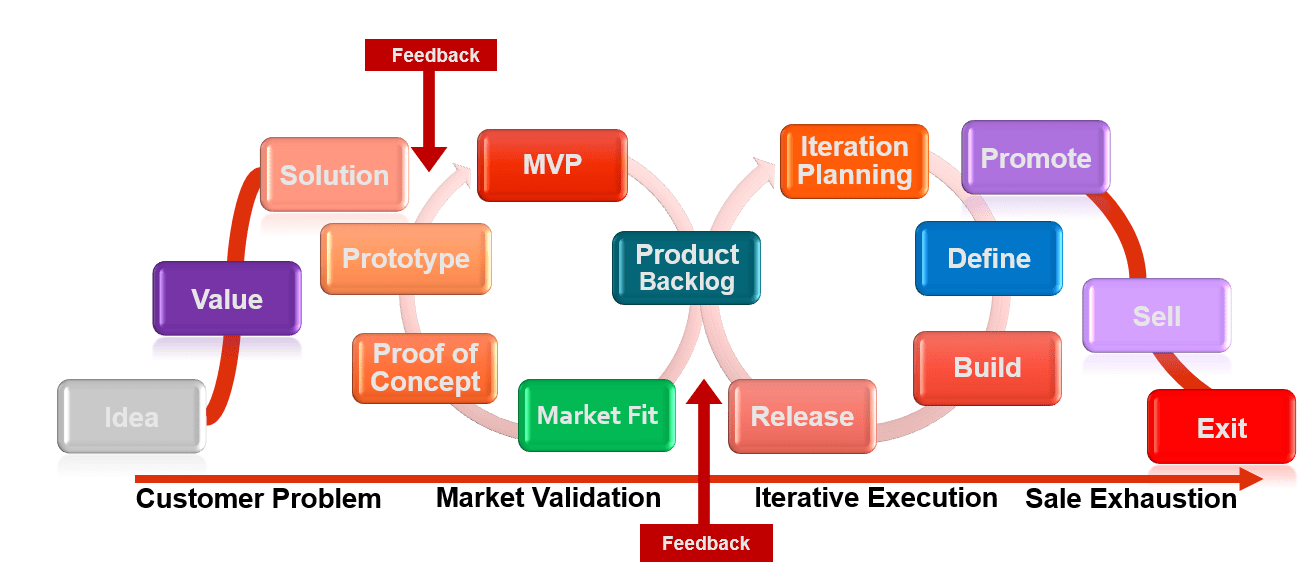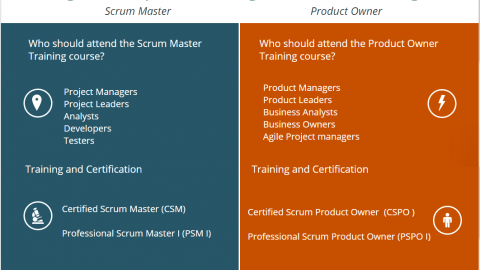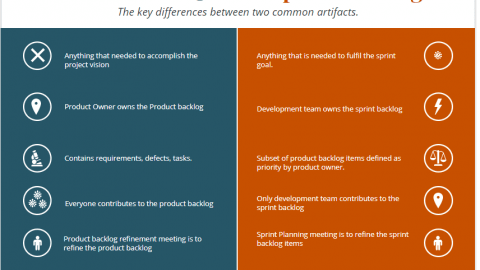Product Agility in A Nutshell
The transition from projects to products has started over the years due to a higher focus for organizations to represent the interests of their customers. The shift was welcome under the following circumstances. Firstly, customer demands have changed, the temporary initiatives on product agility are seen to constrain team performance. And the outcomes are measured by customer satisfaction not by project objectives. And business teams are more and more interested in becoming agile product owner and building agile product management business models.
Table of Contents
When Agile was first introduced as a delivery approach in the early 2000s, the reaction of the market was not one of acceptance. Many have resisted the Agile product approaches. And the idea of agility for many years. Some Project Managers convinced they were doing the right thing managing projects using traditional or waterfall methods. But they had a hard time understanding that other methods can be of use and can deliver better results.
Others have embraced Agile right away. And started applying it mainly in software projects where adoption was easier and less resistant. But there was also a small category of project managers who took Agile as a new opportunity to develop the product agility mentality. It was no longer about project execution through tasks and meeting the project objectives to be successful. The focus became value to users or customers and ability of organizations to respond to change as needed.
What is Product Agility?
The capability of allowing the products to evolve and grow naturally, through iterations and small increments of value, and incorporate customer feedback loops that contribute to continuous improvement. Agile product owners want products to be actual, to resonate continuously with our customers and to help us grow our companies. At the end of the day, every company’s dream is to grow and continue to deliver value to its customers and users.

The product agility paradigm is easier to understand and to explain by organizations. Teams can structure around products and portfolio of products and design streams of value or revenue for their organizations. This way, teams can act as mini-start-ups in organizations, self-sufficient and self-organized. With their own budgets that they can produce by delivering values to customers, they can get more money to invest back into the products that they need. Budget approval becomes a value management lean operation and moves away from a lengthy management process.
Source: “Product Management: The 4th P of Project Management”, NewGenP Webinar, July 9 ,2020
The Purpose of Process
The purpose of simplifying the internal processes is to get your products into the hands of your customers and users faster, with no compromise on the value and quality components. Customers and users get to experience the products firsthand, by using or purchasing them. Customers and users do not care about projects, project charters, RACI charts, Risk logs or requirements document. But they do care about the product agility features that solve their problems and address their needs. As customers, we buy features that resonate with our needs, and we use them as long as our needs are satisfied.
We like to provide feedback and see that our voices are heard. The feedback is a powerful tool that organizations can use to improve on features and services that require more attention. Also, feedback can be a continuous source of ideas for our product backlogs, new enhancements that we can work on to get new customers or continue to have the loyalty of existing ones.
Customer Perspective
Customers are also willing to pay for these features and the price levels can differ as the value offered for product agility can be different as well. When a customer interacts with an organization, they interact with a product, and they become users of that product. This interaction is critical for organizations and the focus of discussion to product life cycle is key to understand where some of the gaps may be. Looking at all stages of the product life cycles, teams have full visibility into what products aim to accomplish.
For that, following a model like the iterative product development approach will help identify the stages of product development. And also to understand how products can grow and deliver customer value. Approaches like this will also help the teams deal with changes in the market, in the customer demands or delivery shifts so needed for organizations.
Source: Gen P New Generation of Project Owners Who Care About Customers, Jonna Tivig and Peter Monkhouse, 2019, page 38
Challenges of Agile Product Management
Today, organizations are facing many challenges regarding agile product management. Technology is changing expediently, competition is coming from all over the world. Because the supply chain is being disrupted by world events and pandemics, just to name a few. So, in order to survive, organizations need to think about product agility and agile product owner concept. In particular there are four areas organizations have to implement:
- Agile product management practices to be able to quickly adapt their products to the changing needs of customers
- Have organization processes that support the agile mindset and allow for flexible self managed teams that are close to their customers
- Have leaders and people are embrace flexibility, creativity, innovation, and listening to customers
- Tools and technology to allow product teams and agile product owner to work effectively and efficiently
So addressing these areas organization will have happy customers. Customers who value products that truly solve their needs and continue to deliver value. Hence these great products will result in organization success and growth with engaged and loyal employees.
I have been working for the last 20 years mainly in the Financial Services sector, as a senior leader managing projects, programs and portfolios in Canada and International. I started my career as a Project Coordinator working in the newly formed PMO at Scotiabank. I grew my skills as a Delivery Manager and then Director of Mergers and Acquisitions, and ultimately Director of Mobile Application Development. I started using the agile ways of working in 2012 and I continued to use iterative and incremental work approaches throughout my entire career. I have been an active member of the Toronto Agile Community, board member and speaker, and organizer of the Toronto Agile Conference (1,000+ attendees) in 2018 and 2019.
In recent years, I have been consulting for various institutions in the Oil and Gas and Financial industries. The focus of the advisory has been on business agility and agile product development. In my recent engagement with Bank of Montreal, I have established a solid ‘customer-first’ culture, with business and technology teams aligned to deliver small increments of value for customers, every two weeks.
I started teaching at the University of Toronto in 2009. I am very passionate about teaching and sharing my experience as well as leadership and working styles with learners. My mission is to motivate students to learn and apply the learnings in work and life situations. I use a variety of learner engagement methods, from practical simulation exercises, to discussion boards. Classes are highly interactive, with real life examples, to allow for applicability of concepts.














“Good article. Looks really efficient. Thanks a lot
“